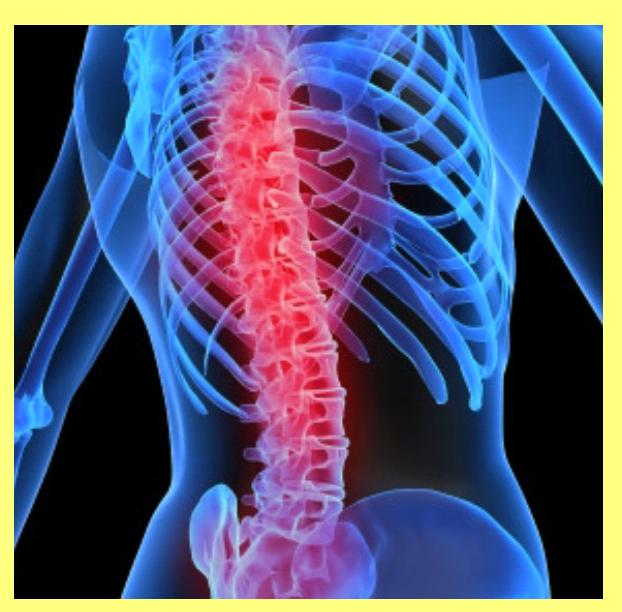Multilevel spondylosis is a spinal condition involving degenerative changes across many levels of the cervical or lumbar spine. It’s manageable with conservative and minimally invasive treatments like physical therapy and medication, but some cases need surgery. But how do you tell the difference? How do you know when it’s time for spine surgery?
Let’s talk about what multilevel spondylosis is and the symptoms that indicate a need for surgery. From there, we’ll discuss the common procedures and how to decide the best path forward.
What Is Multilevel Spondylosis?
Multilevel spondylosis refers to degenerative disc disease affecting multiple levels of the spine. It encompasses a range of degenerative changes like disc herniation, bone spur (osteophyte) formation, and narrowing of the spinal canal (stenosis). Each can compress the spinal cord or nerves.
When that happens, the condition is often called multilevel cervical spondylotic myelopathy (MCSM). Multilevel spinal fusions are usually performed when there’s disc degeneration or spinal instability in multiple lumbar segments.
Who Is at Risk for Multilevel Spondylosis?
The people most at risk for multilevel spondylosis tend to be over age 50 and have a history of spinal wear and tear. Individuals with jobs involving heavy lifting, poor posture, or repetitive neck/back movements are also more susceptible.
Risk can also increase due to genetics, spinal trauma, and congenital conditions like spinal canal narrowing or vertebral fusion.
Extra risk factors include:
- A sedentary lifestyle with weak core support
- Smoking, which reduces blood flow to spinal discs
- Pre-existing spinal conditions like scoliosis or spondylolisthesis
If you’re experiencing chronic neck or back stiffness, early diagnosis by a spine specialist can keep it from getting worse.
What Are The Signs You Need Surgery for Multilevel Spondylosis?
Surgery won’t be recommended for multilevel spondylosis immediately, but it’s necessary if it’s compressing the nerves or spinal cord.
Symptoms that may signal the need for surgical evaluation include:
- Persistent numbness or tingling in the arms or legs
- Muscle weakness in the limbs
- Difficulty with fine motor skills or balance
- Unsteadiness when walking
- Neck or back pain that doesn’t respond to conservative treatment
- Bowel or bladder changes (in advanced cases)
When neurological function begins to decline, waiting too long leads to irreversible damage.
What Are the Surgical Options for Multilevel Spondylosis?
Several surgical techniques are used to treat multilevel spondylosis. The best one for your case depends on the spine’s region and the severity of compression. In the cervical spine, these include:
- Multilevel Anterior Cervical Discectomy and Fusion (mACDF): Removes degenerated discs at many levels and uses interbody cages and a titanium plate for stabilization.
- Anterior Cervical Corpectomy and Fusion (ACCF): Removes one or more vertebral bodies and discs to decompress the spinal cord and then fuses the area using a bone graft and plate.
- Hybrid Decompression and Fusion (HDF): Combines techniques from mACDF and ACCF.
- mACDF with Cage Alone (mACDF-CA): Uses standalone cages without a titanium plate to reduce stress on adjacent segments.
For lumbar spine cases, multilevel fusion may involve two or three levels (e.g., L4-S1), using posterior or interbody techniques with bone grafting and instrumentation to stabilize the area.
How Do Surgeons Decide When Surgery Is Necessary?
Several clinical factors help determine whether a patient needs surgery for multilevel spondylosis:
- Neurological symptoms: Progressive weakness, numbness, or cervical spondylotic myelopathy is a strong indicator for surgery.
- Radiological evidence: MRI or CT scans showing spinal cord compression, increased signal intensity on T2-weighted imaging, or loss of spinal alignment.
- Failure of conservative care: If months of therapy, medications, or spinal injections aren’t helping, surgery may be the next step.
- Spinal instability: Translational movement between vertebrae or deformities can lead to further degeneration if they’re not treated.
Patients with congenital conditions like spontaneous vertebral fusion may also need surgery if their instability or pain becomes too severe.
When to Seek a Second Opinion for Spine Surgery
Multilevel spine surgery is incredibly complex and comes with potential risks, so it’s usually wise to get a second opinion. They can provide different perspectives on your options, and help you make the best decisions for your specific case.
Consider Seeking Extra Medical Opinions When:
- Your surgeon recommends fusion of more than three spinal levels
- You’re uncertain about the timing of surgery or feel rushed into a decision
- Conservative treatments haven’t been fully explored or attempted
- You have concerns about the proposed surgical approach or technique
- Your symptoms are stable rather than progressively worsening
- You want to explore minimally invasive surgical options
- The surgeon cannot clearly explain why surgery is necessary now
Important Questions to Ask Your Spine Surgeons:
About Your Condition:
- How many levels need to be addressed, and why?
- What are the risks of delaying surgery in my specific case?
- Are there any alternative surgical approaches to consider?
About Experience and Outcomes:
- How many multilevel spondylosis surgeries do you perform annually?
- What are your complication rates for this type of procedure?
- Can you provide specific success rates for patients with similar conditions?
About Recovery and Long-term Outlook:
- What can I realistically expect for pain relief and functional improvement?
- How long will the recovery process take for my specific case?
- What are the chances I’ll need more surgery in the future?
About Alternatives:
- Are there any newer surgical techniques that might be appropriate?
- Would I be a candidate for minimally invasive approaches?
- Are there any clinical trials or innovative treatments available?
Don’t hesitate to ask for time to consider your options. A reputable spine surgeon will support your decision to seek more opinions. They won’t pressure you into immediate surgery unless it’s a real emergency.
Is Surgery Always the Best Option?
No, not everyone with multilevel spondylosis needs surgery. Tons of patients comfortably live with it using physical therapy, medication, and posture work.
But, if you need surgery and wait too long, you can damage your nerves permanently. Always intervene before these deficits become irreversible.
What Are the Risks and Benefits of Surgery?
Benefits:
- Relief from nerve compression
- Improved arm or leg strength
- Enhanced mobility and coordination
- Stabilization of the spine
- Reduced long-term risk of neurological deterioration
Risks:
- Adjacent segment degeneration (ASD)
- Hardware complications (e.g., screw loosening or cage subsidence)
- Swallowing difficulties or throat discomfort (cervical cases)
- Infection, dural tear, or nerve injury
- Possibility of needing revision surgery later.
Some techniques, like mACDF-CA, offer lower stress on adjacent segments but come with increased risk of cage subsidence. The best approach finds the right balance between surgical access, long-term stability, and risk.
Multilevel Spondylosis Surgery Recovery Timeline
Recovery from multilevel spine surgery varies based on the number of levels fused, your health, and the technique used.
Typical Recovery Timeline:
- Hospital Stay: 1 to 5 days
- Neck brace (cervical cases): May be used for several weeks
- Physical Therapy: Begins within a few days post-op to restore mobility
- Light Activities: 4 to 6 weeks after surgery
- Full Recovery: 3 to 6 months, sometimes longer
Patients undergoing multilevel fusion should expect a longer and more structured recovery process than those dealing with just one level.
Multilevel Spondylosis Surgery FAQs
How many spinal levels can be safely fused?
Two- or three-level fusions are common and generally safe. More than three levels is pushing it. That amount may increase complication rates and reduce spinal flexibility. Surgeons perform these with plenty of caution.
Can multilevel spondylosis return after surgery?
The fused levels will stabilize, but the adjacent segments can still degenerate, especially if the stress shifts.
Does age affect surgical outcomes?
Yes. Older adults may have more comorbidities or slower healing. But studies show they can still benefit from surgery when appropriately selected.
When Should You See a Specialist?
If you’re experiencing progressive neurological symptoms, balance issues, or pain that doesn’t respond to conservative care, talk to spine specialist.
Multilevel spondylosis can become debilitating if left untreated, but with early intervention, many patients see dramatic improvements in function and quality of life.
Your Path Forward With Multilevel Spondylosis
Multilevel spondylosis doesn’t always need surgery. But when spinal cord compression or instability causes serious symptoms, surgery can protect mobility, reduce pain, and prevent long-term disability.
If you’re concerned about your symptoms or diagnosis, schedule a consultation with an experienced spine surgeon to explore your options.
Resources
https://www.spine-health.com/treatment/spinal-fusion/multilevel-spinal-fusion-low-back-pain
Li X, Jiang L, Liu Z, et al. Different Approaches for Treating Multilevel Cervical Spondylotic Myelopathy: A Retrospective Study of 153 Cases from a Single Spinal Center. PLoS One. 2015;10(10):e0140031. Published 2015 Oct 13. doi:10.1371/journal.pone.0140031
Li, Z., Liu, H., Yang, M. et al. A biomechanical analysis of four anterior cervical techniques to treating multilevel cervical spondylotic myelopathy: a finite element study. BMC Musculoskelet Disord 22, 278 (2021). https://doi.org/10.1186/s12891-021-04150-7
Yan N, Yu S, Hou T, Gu G, Zhang H, Zhao S, et al. (2014) Cervical Spondylotic Myelopathy Caused by Single-Level Vertebral Spontaneous Fusion. PLoS ONE 9(11): e112423. https://doi.org/10.1371/journal.pone.0112423



